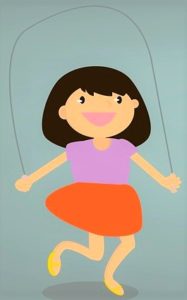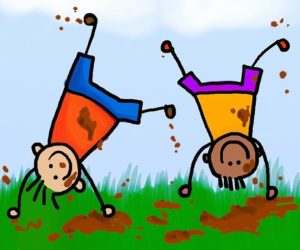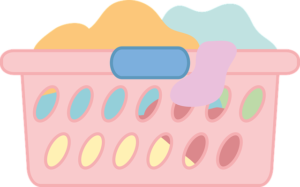 Moving your body is fun, feels good and helps you be healthy and strong. Moreover, the more your body does something, the better you can do it. The process involves muscle memory, coordination, fine motor and gross motor skills. For example, the more you skip rope the better you get at it, which makes you enjoy and skip rope more often. For another example, the more you practice throwing and catching a ball the better you get at it, making you more likely to enjoy and play sports that involve throwing and catching balls. The eye hand coordination you develop playing catch makes it easier for you to learn and play other sports such as tennis and volleyball that require this skill.
Moving your body is fun, feels good and helps you be healthy and strong. Moreover, the more your body does something, the better you can do it. The process involves muscle memory, coordination, fine motor and gross motor skills. For example, the more you skip rope the better you get at it, which makes you enjoy and skip rope more often. For another example, the more you practice throwing and catching a ball the better you get at it, making you more likely to enjoy and play sports that involve throwing and catching balls. The eye hand coordination you develop playing catch makes it easier for you to learn and play other sports such as tennis and volleyball that require this skill.
Moving more and sitting less has many benefits for children and adults including:
- Develops and maintains muscle, bone strength and flexibility. These skills are needed for children and adults to safely
 explore and experience the world around them.
explore and experience the world around them. - Improves body awareness and coordination. As your child learns what their body can do and how to move it, they become less clumsy. Body coordination can also help with overall learning.
- Reduces stress and improves sleep. Being active is a healthy way to get rid of stress for people of all ages. In addition, as your child plays hard they get tuckered out and sleep better.
- Boosts energy by getting blood pumping to all parts of the brain and body.
Children’s movement during active play promotes:
- Learning and confidence. Your child’s body and brain develop in coordination with each other. The brain tells the body what to do and the body sends signals back to the brain. When children accomplish a skill such as throwing a ball or learning to skip it gives them the confidence to try other things.
- Cooperation, sharing, taking turns and following directions. This is especially true if active play includes games played with others and the games have a few simple rules.
- Curiosity and creativity – as your child explores their environment.
What can parents do to promote moving more?
Children copy what adult do, so be active yourself. Fit activity into your daily life as much as possible. For example:
- When gathering the laundry have kids help. Have them wad clothing into a ball, throw it to you while you hold an
 empty laundry basket in your arms. Move the basket if needed to help them make a basket. Give them points for every basket they make. Exchange points for extra playtime.
empty laundry basket in your arms. Move the basket if needed to help them make a basket. Give them points for every basket they make. Exchange points for extra playtime. - If outside, let children pull weeds and dig in the dirt. Make it fun by making it a contest to see who can pull more weeds, or consider paying a penny per weed pulled.
- Take a snack or meal to a local park or open space and have a picnic. Bring a ball (softball, rubber ball or soccer ball), Frisbee and jump rope.
Long-term benefits of moving more:
Being active in childhood has so many immediate benefits, but it also has many long-term health benefits such as protecting them from developing diabetes and heart disease later in life. Children should get 60 minutes of active play each day, most days of the week. Adults should get 30 minutes of moderate activity each day, most days of the week.
Our bodies are designed to move, so get moving and feel the benefits!

